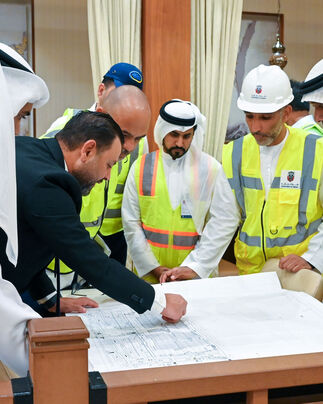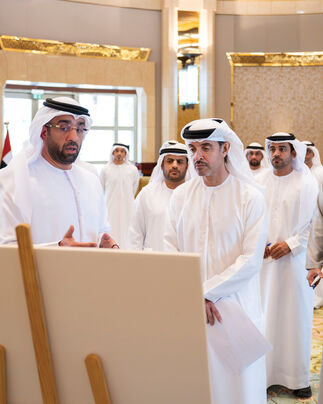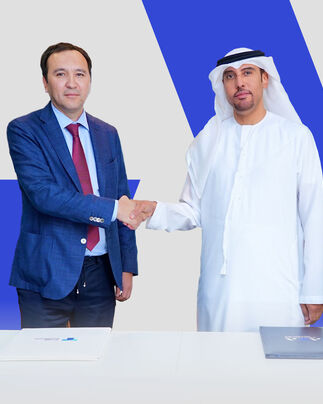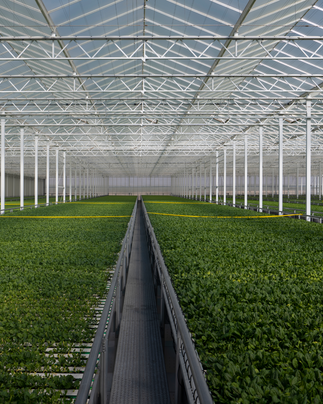The Abu Dhabi Department of Energy (DoE) has launched the Abu Dhabi Energy Outlook 2050, the first comprehensive blueprint mapping a bold net-zero vision for the emirate and promoting a just and equitable transition, ahead of COP28 UAE.
His Excellency Awaidha Murshed Al Marar, Chairman of DoE, said: “This outlook presents an ambitious vision towards our green goals and positions Abu Dhabi as a global beacon of sustainable development moving towards a zero-carbon society. Crucially, the scenarios outlined in the outlook – maintaining current policies, closing the gap for net zero in 2050, embracing a full technological shift paradigm – are designed to inspire sustainable change and shape the net-zero transition, without prescriptive measures.
“The outlook shows that we can address the emissions gap, meet our net zero 2050 targets, and develop a climate-neutral economy that gives everyone the sustainable environment they deserve without sacrificing the prosperity of the state or the individual.”
The outlook illustrates what Abu Dhabi’s transport, buildings, industry and power sectors might look like under ambitious policies and technology advancements aimed at accelerating the pace of decarbonisation in all sectors over the next three decades. It aligns with the COP28 Net-Zero Transition Charter, which aims to mobilise all sectors of the economy and society to commit to a national pledge of reducing carbon emissions and producing a credible net-zero transition plan.
Abu Dhabi has deployed decarbonisation policies and regulations including Clean Energy Targets 2035, Regulatory Policy for Clean Energy Certificates, Policy for Energy Production from Waste, Regulatory Policy for Electric Vehicle Charging Infrastructure, District Cooling, Recycled Water Policy, Demand Side Management Strategy, as well as important position papers related to hydrogen and market reforms.
His Excellency said: “We are already at 40 per cent renewable energy in Abu Dhabi. We are targeting 60 per cent clean electricity by 2035, and a carbon-neutral economy by 2050. We are also innovating in water reuse and, by 2024, we hope that not a single drop is wasted in the emirate of Abu Dhabi. To achieve this kind of collective socio-economic change and climate action, at the emirate and national level, we have to bring everyone along with us. It’s not about limiting options; it’s about forging the right outcomes together with behaviour change, dialogue, agreement and alignment.”
The outlook was developed after a year of modelling using the DoE’s Integrated Energy Model or Energy Cube, insight gathering and consultation with broad range of public and private stakeholders. It will be revisited and updated as progress is made towards net zero goals, markets change, and technologies progress.
“Creating this kind of net-zero economy is hugely complex and no doubt the challenges we face will grow and evolve in line with our technological prowess. Some will be beyond our control, such as global market access and supply of key technologies, while others can be directly mitigated by proactive policies and greater collaboration. For example, Abu Dhabi can invest more deeply in the education of our youth talent, deepen international collaboration in key research and development areas, and strengthen backbone infrastructure projects such as hydrogen and CO2 pipelines or CCUS hubs. Though the difficulties and costs of adopting climate-neutral technologies are sizeable, so are the benefits we stand to gain as an emirate, as a nation, and as a globally connected population.”
The DoE highlights that partnerships are the key to investment in emerging technologies and deploying them at scale across different industries and sectors, as the UAE Government’s Net Zero 2050 Charter was signed by all seven emirates in March 2023.
“Both the Net Zero and Technological Shift Paradigm scenarios require substantial, iterative change in everything from the way we produce energy to how we consume it in our homes and vehicles. Committing to ambitious policies, consistently choosing to invest in emerging technology and forging cross-sector collaborations to maximise the use of said technology is how we get there.”










